|
One of the biggest struggles for educators is not having enough time. I want to acknowledge that this is a systemic problem—our educational systems are designed in a way that perpetuates burnout, and this should change. However, until that change happens, I want to share some time saving tips that have helped me make space for the stuff that re-ignites my passion for teaching. Below, I share two time savers for planning and two for grading. Shift your planning goal from “covering content” to developing independent learners. So much of my own stress came from not being able to cover all of the content. I talk more about this as one of the big planning mistakes I made as a teacher in a previous post. Simply acknowledging you will not “get through” content frees up your class time. I find when I am using terms like “cover content” and “get through,” the students aren’t retaining what I want them to anyways. It’s better to focus on doing less, but make sure students are actually learning it. I will be posting an entire blog on this topic next week, but I’ll give you the short version here. The world is changing. Things are Google-able. It’s more important students are able to find, analyze, and apply new information than memorize a predetermined list of facts. Students are more engaged when they are given choices for how to connect content with their own lives, when they are challenged by assignments that have an authentic purpose, and they are able to set and reflect on their own goals for learning. This can’t happen when we try to simply “cover” content. This may be how we learned, but it’s just not preparing our kids for the kind of world they will (and currently do) live in. Select a few low-prep, high-impact strategies and recycle them. Students and teachers benefit from routine. Think of the best class you’ve ever had, where students were most engaged. What was the activity? What were students doing during the lesson? If you need help generating this list, you may find the strategy from this post helpful. Make a list of 3-5 activities or protocols. For example, my top 3 discussion protocols are: circle, socratic seminar, and human barometer. Once you determine what kinds of activities you want students to engage in (e.g., discussion, analyzing text, creative application), list out a couple of protocols that you and your students like to engage with. Bonus points if the activity itself is low-prep and you just need to substitute content-specific text/questions. Keep this protocol bank, and recycle activities each week or unit. If you find yourself spending hours making mini lessons ask yourself: How could I teach the same content and have the students practice a different skill than listening and note-taking? For example, my transition from lecture prep to student-centered instruction started with this time saving shift: read through a textbook, make a slide deck, and create a guided worksheet (~4 hours) → find a text(s), generate 1-2 big questions to answer, and choose a text-based protocol from my resource bank (~30 minutes). My planning was easier and my students were developing text analysis skills. Use tech to speed up grading. As a humanities teacher, one of the biggest drains on my time was grading papers and providing detailed feedback. If you teach math, your time may be spent grading quizzes or exit slips. I have time savers for both! Technology saved me a ton of time grading quizzes and exit slips. Google Forms (or similar apps through your school’s Learning Management System) is what I used for grading multiple choice assessments—quizzes or exit slips. You can input the correct answers into a form and set it to auto-grade. This way, students receive immediate feedback and as a teacher, I can visually pull up pie charts of how students did in real-time, and re-teach before students leave class, as opposed to the next day. This saves you time and improves student retention of accurate information. My paper grading also benefited from technology. Google Docs is helpful for adding comments to student work. I’ve used both typed and audio notes when my hands were tired of typing or I could talk faster than I could type. I used Vocaroo for this and pasted the link into a Doc comment. I’ve also found screen recording to be an excellent way to grade—I can verbally share my comments as if we were in a 1:1 conference while I point to the sections of the paper I’m referring to because I’m recording my screen. For more time saving tech tools, get my freebie! It includes a list of 5 Chrome extensions I use to save time planning lessons, grading assignments, and communicating with students and parents. Grade during class. Formative assessments are great for advancing student learning. Summative assessments are often heralded as the best form of assessment, but the formative assessment leading up to the summative is where the growth happens. Formative assessments may be quizzes or exit tickets, but it could also be listening to students discuss or watching how they approach and solve a problem. Being able to provide real-time feedback is going to help students more than waiting to see how they did a week later on a quiz. Design lessons that allow you to move around and see students’ brains in action. You can also provide feedback on more formalized assessments in class. Let’s say students just submitted their first draft of a paper. As you read through these first drafts, I challenge you to write just one phrase of feedback. The goal in this is to identify the most important, highest-leverage piece for students to revise. As you identify these for students, it’s likely you will notice a few categories that are repeating. You can use Micro-Grouping to give students focused feedback in small groups as opposed to writing the same comments on each individual paper. Again, this saves you time and is better for student learning since they can ask questions about your comments in real-time. Many of these tips require a re-thinking and re-working of how we currently do things. That’s a necessary part of saving time. We can’t create it out of thin air, so we need to give something up. It’s just a matter of evaluating what is worth keeping and what is worth switching up. These are just 4 starting points. I hope these tips help you start thinking about ways to carve out more time for the important things. Interested in more time saving ideas? Angela Watson’s Truth for Teachers podcast offers some excellent tips and shares success stories from teachers who have saved themselves lots of time! I’d love to hear what else you’ve found saves you time. Share your tips with other educators or ask the community on our facebook group. Go get that time back, teachers!
0 Comments
Principals, APs, deans, superintendents, and other educational leaders, hello! If you’re here, I’m guessing you want to distribute the leadership in your school. You know shared leadership is a good idea for you, your teachers, and your students. Maybe you’re just not sure how much of these things are do-able right off the bat or which ones to should start with. You consume the latest education blogs, books, or podcasts, learning about the innovative teacher leadership systems at other schools, and you want to bring them to your school! Maybe you’ve tried to give teachers new leadership opportunities, but they aren’t able to take on the extra work that comes with it. They may seem overwhelmed just keeping up with all of their teaching responsibilities. Maybe you haven’t started yet because taking the first step to change things up feels like stepping off a cliff into an abyss, and you not looking to step off a cliff! Leaders, can you relate to this? You are not alone. These are some of the most common pain points and questions I get when coaching leaders. Let’s see what we can do... Make time. Unfortunately, we have a finite amount of time in our days. It is simply not possible to make more time. Trust me, if I could make that happen for you, I would. As one of the most prominent experts on leading change, John Kotter, emphasizes the importance of making space for change. We can’t add to people’s plates without taking something off. If it’s a priority, something else can go. Relatedly, when making your next budget, how you spend your money (and the process for how budgeting decisions are made) should reflect your priorities. We know teacher pay is not great, and we know involving involving diverse stakeholders in organizational decision-making leads to higher quality decisions and a greater commitment to them (Kusy & McBain, 2000). So, if you are unable to make time in the regular school day, find a way to pay teachers for their leadership work beyond their contracted time. Reallocating time or money is not easy, but it will make the rest of the work a lot easier. Still not sure about this “make time” idea? I made you a 1-pager to quickly run through some options! Click the button below to get it. Be transparent about the decision-making process. One of the worst things you could do is say “We’re doing shared leadership now!” and then proceed to make important school decisions without consulting teachers. Let your staff know what has to be decided by you alone, what teachers will have input on but will ultimately be a leader decision, what will be decided by consensus, and what should be decided by stakeholders without leader input—because for some decisions, they will know best (Kusy & McBain, 2000). Build capacity. Create opportunities for teachers to grow and learn (Anderson, 2012). Normalize the process of trying mini experiments, analyzing the evidence of impact, and reflecting on how it went. Develop individual teachers’ and teams’ capacities for strategic planning. Help them learn how to identify relevant sources of data (e.g., state, school, and/or classroom data), analyze that data, and use it to set their own SMART goals for the year. Offer suggested activities for teachers to collaboratively learn (e.g., data analysis in PLCs, success shares, curriculum shares, learning walks, brainstorming or problem-solving protocols). Prioritize capacity building when thinking about the PD you offer. “Successful instructional leaders provide conditions through staff development that incorporate study of professional literature and successful programs, demonstration and practice of new skills, peer coaching, and use of action research focused on student data, and they study the effect of new strategies on students (Blase & Blase, 1999)” (ASCD). Invest in teacher growth and everybody wins! Build up shared leadership structures. Take stock of the teacher leadership opportunities available in your school right now. Where can teachers step up and lead? What opportunities do they have to experiment, innovate, problem-solve? Do teachers make up a proportional amount of the leadership team? Are they given authority to make important instructional decisions (with students and parents)? Identify potential opportunities for teacher leadership: leading data collection and implementation for a particular initiative, designing and leading Professional Development workshops for the staff, organizing teacher-teacher or school-school visits, redesigning the school schedule… If you’re not sure what opportunities need to be strengthened or added, ask the teachers! What’s working? What would they like to see? Reach out to other schools and see how they do things. Focus on the positive. Appreciative inquiry is a great approach to organizational change. In a previous post, I shared a bit about AI and positive deviance. It’s basically seeking out the strengths in the organization, seeing what is working, and spreading the success across the organization. This stuff works! Cooperrider & Whitney (2005) report these findings from doing organizational change work at a major corporation: “What we discovered quite honestly was that momentum for change and long-term sustainability increased the more we abandoned ‘delivery’ ideas of action planning, monitoring progress, and building implementation strategies. What was done instead...was to focus only on giving [appreciative inquiry] away, to everyone, and then stepping back...what was spreading as a grassroots movement to build the new GTE. Initiated as a pilot training to see what would happen if the tools and theories of appreciative inquiry were made available to frontline employees, things started taking off. All of a sudden, without any permission, frontline employees are launching interview studies into positive topics like innovation, inspired leadership, revolutionary customer responsiveness, labor-management partnerships, and ‘fun’” (p. 12). Model a learning orientation. Prestine & Nelson (2003) found effective principals learn with their staff (ASCD). You are a leader who is constantly investing in your own growth! That’s why you’ve read this super dense blog post this far! Make sure your staff sees that. Participate in PD with them! Teachers notice when you leave the room, and they notice when you stay. Let them see your fierce commitment to learning. I applaud you for venturing down this shared leadership path. It’s a bold move, and I am rooting for you. I will not leave you hanging. I’ll continue to blog about this topic because it is my passion! There’s so much involved in doing this well, and I will continue to break it down piece by piece. Next week, I’ll be talking about getting teacher buy-in, so if that’s been a struggle for you, stay tuned! You know power with is better than power over, and the power game is not zero sum. In the words of Mary Church Terrell, and recently popularized by Emilie Aries, let’s “lift as we climb.” Keep up the awesome, leaders. Welcome, change-maker! If you found yourself here, reading this blog post, I imagine you might be a bit of a teacher nerd like me. You could talk teaching all day. You just can’t get enough educational research and innovative pedagogical ideas. You are a sponge, soaking it all in. You may have identified some things in your educational community that you think could be updated. In fact, you would love the opportunity to lead PD for teachers at your school! Right now, you may not hold a formal leadership position at your school. Perhaps, you are part of a leadership team or you serve as the chair of your department or the leader of your grade team. Maybe you aren’t currently in one of these “teacher leader” positions. Can you relate to this? Yes? Well, read on, rockstar. This post was made for you. So, you want to make some changes, but aren’t quite sure what you can do. I see two paths forward, depending on your context. Path A: Talk to your administrator(s). Some building leaders are all in on shared leadership and would be happy to give you the positional authority you need to tackle whatever problem it is you are looking to tackle. Some administrators will be open to the idea of shared leadership, but maybe they hadn’t ever thought of a teacher taking on roles like leading PD or starting a new committee or serving on a decision-making body. You know your leaders best, so, assess the situation, and decide if this route is an option for you. If you’ve got a supportive administrator, prepare yourself for the conversation. It’s best to go in with concrete talking points, and they shouldn’t necessarily be a list of the problems you want to solve. Now, if you know this person(s) and they are always complaining about the issue you want to tackle, by all means, call it out, team up with them, and knock it out! Most likely, there is a reason the problem hasn’t been addressed yet—it may not be on the leaders radar or there may be division in the staff about how to address the problem or debate about whether the problem is even a problem. In this case, I would frame the conversation as a professional growth or passion project. For example, “As you know, I love teaching, and this year, I’ve tried some things that have been really great for student engagement. I’d love to help my colleagues think more about more ways to increase student engagement. What do you think is the best way to do that? I’m happy to lead a PD workshop or start a small PLC group of interested teachers.” This raises a common goal (student engagement—who doesn’t want to raise student engagement?!) and frames it in a way that is not threatening. You’re not advocating a whole system change (which, frankly, may need to happen). Instead, you’re suggesting something small and manageable. I find the magic word here is “pilot.” When in doubt, suggest a pilot project. If it gets traction, you can grow the project, and if it flops, it was only a pilot. Only a few teachers were involved anyways. Path B: Use appreciative inquiry to spark grassroots change. Appreciative inquiry (AI) is an approach to change that comes from the positive psychology field. It involves talking about individual and collective capacities (achievements, strengths unexplored potential…) to generate change. The 4 stages of AI are discovering the positive, dreaming a better future (grounded in a positive present/past), designing how to magnify the positive, and working towards your destiny by generating hope, building on strengths, and creating opportunities & processes to learn and adapt (Cooperrider & Whitney, 2005). You don’t need a formal committee to try this out. To try this out, gather a couple of interested colleagues (or if absolutely no one is interested, join forces with teachers from other schools—go to our Time for Teachership Facebook group and see who’s interested! Start with discovery. The positive deviance approach is a great way to try this out. Basically, you identify what is working. This approach is described as “[enabling an] organization to amplify uncommon behaviors or strategies discovered by community members...develop some activities or initiatives based on these findings and measure outcomes. The PD approach brings about sustainable behavioral and social change by identifying solutions already existing in the system,” (“Basic Field Guide to the Positive Deviance Approach”). Let’s say you’re interested in reducing the number of discipline referrals. Look at the data, and ask: Is there anywhere where this isn’t a problem? A particular room, type of classes, time of day? What’s going on there? If there are no positive deviants in your school, ask to investigate another school. Are there similar schools nearby that are doing better on this issue? Could you visit or chat with teachers from that school to figure out what’s going on? Pedro Noguera just shared an example of this at iNACOL’s 2019 conference. He spoke of an elementary school that struggled with behavior management and food fights during lunchtime. They visited another school in the same neighborhood that didn’t have behavior problems. They quickly noticed they served lunch “family style” instead of the typical stand-in-line and fill up your tray style. Positive deviance is powerful. (Here's the link to that talk.) This may take a culture shift, and while you may not get the whole school on board, people will notice your small group’s positive energy and outcomes that result from this work. Welcome new converts in! While some may resist a different way of doing things, remember people’s resistance to change, is often coming from a fear of loss (Heifetz et al., 2009). If we can frame the change as valuing what the community (and individuals) have to offer and simply amplifying that, it’s a lot easier to take in. Here’s an organizational culture question to ask of your team: “What would our organization look like if it were designed in every way possible to maximize the qualities of the positive core and enable the accelerated realization of our dreams?” (Cooperrider & Whitney, 2005) What would it look like to consistently seek out positive deviance and spread that around? It may look like visiting other teachers in action, regularly reviewing & tracking data on the identified problem. It may look like mini success shares, in which teachers share what has been working really well in their classes. It may look like keeping all of these successes in a shared Google Doc somewhere for when others express interest in checking out all of the good stuff you’re doing. Whatever path you choose—talking to an administrator about getting onto a committee or starting a pilot project or informally launching an appreciative inquiry to find positive deviants, you’ve got this. Change is certainly hard, but don’t let that stop you from believing things can get better. They can, and you can lead the charge. Seek out fellow teacher nerds and learn together! Your commitment to lifelong learning is what fuels you. Feed that fire! If you haven’t already, check out the Time for Teachership Facebook Group. Your fellow lifelong learners are just waiting for you to reach out and start a conversation! Go, lead change, you brilliant educator, you. Thinking big, acting brave, and always bringing your best self to work can be exhausting. It’s important to rest and recharge—self care is important! Although, lately, I’ve been thinking about the term self-care and I’ve been struggling with two pieces of it: one, it often seems to be used (or maybe I’ve just been using it) as something to do when we’ve already exhausted all of our energy and need to get ready for another bout of energy-depleting activity, and two, it seems to place total responsibility for well-being on us as individuals. So, I’ve found myself using the term well-being more. I like it because it seems more like a way-of-being, not a one-off activity and it can be promoted through systems, structures, and policies as part of organizational culture (i.e., a school’s way-of-being). Regardless of what term you use, I want you to regularly practice well-being! You should totally commit to this for yourself, but I recognize that we as educators are a care-giving, selfless sort, so if you can’t do it for yourself, do it for your students and your colleagues! Research shows that employee health directly impacts the success of organizations (in the case of schools, this is student achievement). Leaders, this is especially important for you to model, as your sense of well-being is related to the well-being of students and teachers (Malayter & Dehmer, 2019)! I am not a well-being expert, so this list is certainly not inclusive or even “best practice”, but there are some things I knew I wanted to do better, and I wanted to make a list that was realistic—not too long and not too big of a jump from what I was already doing. Listening to Rachel Hollis talk about her “5 to Thrive” daily habits gave me a starting point, and from there I developed my own version of daily goals. Here’s what I’ve been working on:
For me, this takes active monitoring. For you, it may not require tracking your progress, but for those of you who like this kind of thing, I’ve made you a free well-being tracker! This tracker includes the 6 well-being practices I mentioned above as well as a blank space to add your own. It takes some big thinking and some brave acting to be your best self each day. So, download the freebie, practice well-being regularly, and share how it’s going! We’ve been talking about educational equity (see “Getting Started with Equity” and “6 Strategies for Advancing Educational Equity”). Dress codes can contribute to inequitable and even hostile learning environments for kids. As a 12-year old, I was sent to the office for my shorts being too short. The measuring tape was taken out and everything. I was in a position of privilege, as my mom was a teacher at the school and was able to advocate for me, so the negative impact was only about 30 minutes of missed class time. At 12, I knew this was a problem, and I’ve since learned even more about the extent of the problem... It’s a big problem, and the sexism of dress codes intersects with racism. Here’s an excerpt from an earlier blog post on acting brave: Black girls in the US are disproportionately targeted by school dress codes and experience victim blaming from their teachers. Too many high schools ban hair wraps or other head coverings and regulate skirt/short length and clothing tightness. As an interviewee for this Independent article stated, “Any adult sexualising girls’ bodies by policing their clothing is problematic for students and results in negative academic, social and emotional effects on students. Too often girls recounted stories about administrators implying that girls are inviting sexual harassment because of what they are wearing. Not only is this blaming the victim, it also communicates to boys or other harassers that they are not responsible for their own behaviour.” Many dress codes even ban particular hairstyles, typically target black hair, citing these styles as “distracting” or “unprofessional” (“Schools are Policing Black Kids’ Hair...”). Watching high school wrestler, Andrew Johnson, have his dreadlocks publicly cut off after being threatened with forfeiting his match was heartbreaking and nauseating. These types of rules are racist—they normalize whiteness and marginalize non-whiteness. This perpetuates the idea of white supremacy (“Hair Politics: How discrimination against Black hair in schools impacts Black lives”). These policies may have been written without such an intention, but once we see the racist policies for what they are, it’s on us to do something about it. So, what can we do?
If you’re thinking, “What if bringing this issue up agitates the students and they start protesting?” Use it as a learning opportunity! Introduce them to other students who are doing or have successfully done the same thing. Help them make it respectful and effective. Activism is linked to all sorts of positive outcomes for youth, and being able to speak out against injustice is a skill we should develop in our kids. Might simply bringing up the dress code draw attention to you as a teacher? Sure. Adults in power may struggle with seeing a point of view that differs from “how it’s always been.” I’m not saying you must risk losing your job if your administration is that hostile, but I am pointing out that the current dress code at many schools disproportionately hurts students who identify as female and students of color, and it particularly hurts students at the intersection: girls of color. Shaming students and removing them from the classroom are not good for students’ self-image or their educational success. Addressing an inequitable dress code requires acting brave, for sure. So, take a deep breath, think big, and imagine what your school could look like with a more inclusive dress code. Re-read your best self portrait, or create one if you haven’t already! What are the values you hold when you’re at your best? How do those figure into your response on this issue? And finally, take another look at the youth and adult activists who have successfully fought for a better dress code, channel their bravery, and take a brave step of your own. Earlier this week, I shared 2 things you could do to lay the foundation for equity work. I also emphasized the need for specific language—calling out the form(s) of inequity you see. I painted a very quick picture of the problems and shared that this is hard but worthy work. Here’s a link to that post if you want to go back and read it before continuing with this post. Let’s get down to it. You know that structurally, educational practice reproduces inequity by race, class, ability, language, and gender. Now, what? Here are several strategies, resources, and ideas to get you started.
That should keep you busy for a while! Keep an eye out for more equity strategies on the Time for Teachership blog, in weekly emails to the community, and on my Pinterest boards, where I’m working to build up collections of resources for teachers ready to dive in deep. I’d love to hear about all of the great work you’re doing to advance equity in your educational communities. Share with me in the comments or in our private Facebook group. Finally, involve others in this work. You can start by simply sharing this post with a friend or colleague! Again this work is tough, but so incredibly powerful. It absolutely requires each of us to think big, act brave, and be our best selves. Equity. People may approach this term from different lenses: race, gender, class, ability, language. Educational equity encompasses all of these aspects. I think it’s important to be specific in our language when we discuss equity - what kind of equity are we talking about? It doesn’t have to be the same each time, but when we’re examining a particular equity issue, don’t be vague. Call it out! Looking at the data alone, it’s evident educational equity includes several intersecting elements of student identity such as: race, ability, language, class, and gender. National graduation rates indicate we are under-serving and often actively marginalizing Black and Brown students, students with IEPs, students new to the English language, and low-income students (National Center for Educational Statistics). In the US, Black girls are disproportionately targeted for disciplinary action even for adherence to sexist and racist school dress codes ("Black girls in US pushed out of school over racist and sexist school dress codes, report finds"). The vast majority of transgender students (75.1%) feel unsafe at school because of their gender expression, and 63.4% of transgender students avoid bathrooms (Gender Spectrum). If you’re thinking, “This is great, but I just don’t have time for this!” First, I hear you—time is scarce! Second, I would argue at least recognizing the educational inequity that exists and starting to consider how your school may be unknowingly reproducing inequity is critical to our work of educating all children and helping them be responsible, equitable leaders in school and throughout their lives. So, where do we start? I’m going to share 2 things you can do that are foundational to equity work. I’ll share more later, but these 2 are BIG, so it’s more than enough work to get started!
Again, this is tough work. So, here’s a few quick tips from my own journey...
This work, although difficult, is one of the most powerful investments you can make in your practice as an educator. Recognize the extent and forms of educational inequity, and talk to others about it. Commit to doing the self-work. Later this week, I’ll share some concrete ideas for improving equitable practice in your schools. We can re-make the systems that were designed to reproduce inequity! Have educational equity related questions? In the meantime, continue to think big, act brave, and be your best self. |
Details
For transcripts of episodes (and the option to search for terms in transcripts), click here!
Time for Teachership is now a proud member of the...AuthorLindsay Lyons (she/her) is an educational justice coach who works with teachers and school leaders to inspire educational innovation for racial and gender justice, design curricula grounded in student voice, and build capacity for shared leadership. Lindsay taught in NYC public schools, holds a PhD in Leadership and Change, and is the founder of the educational blog and podcast, Time for Teachership. Archives
May 2024
Categories |


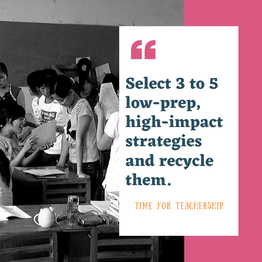
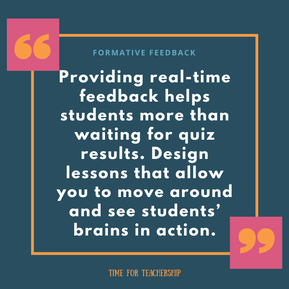





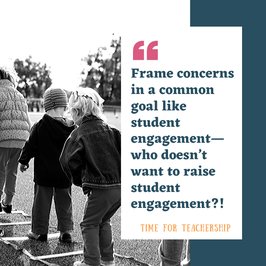
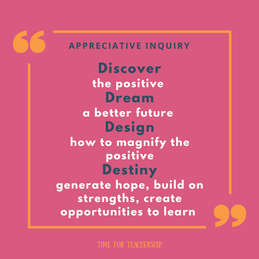
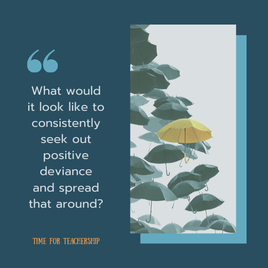
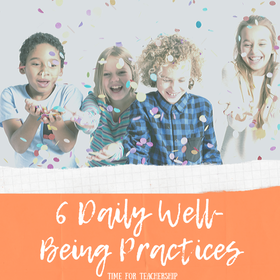
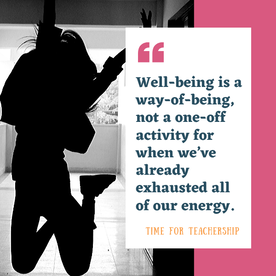

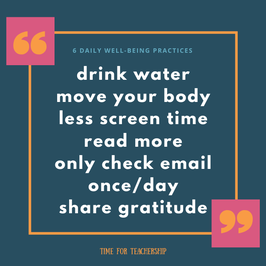



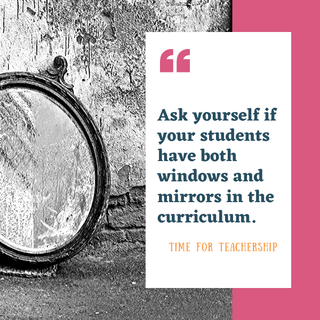
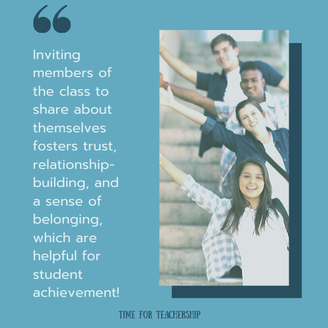

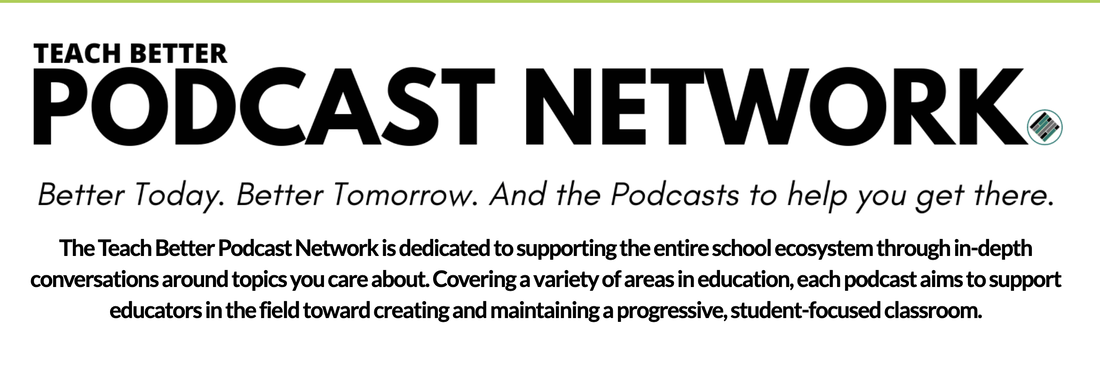
 RSS Feed
RSS Feed